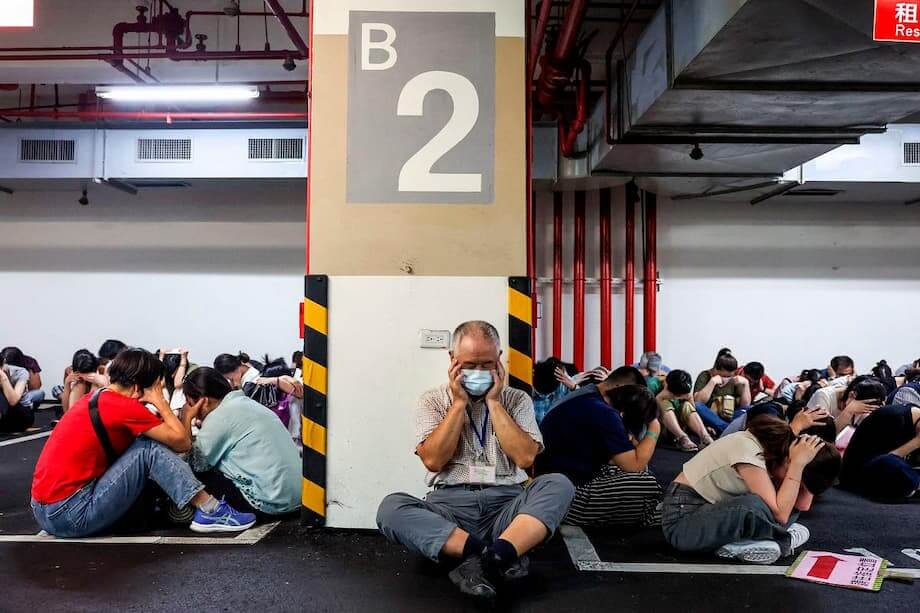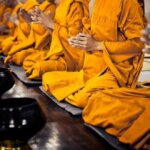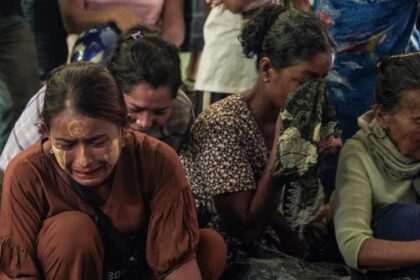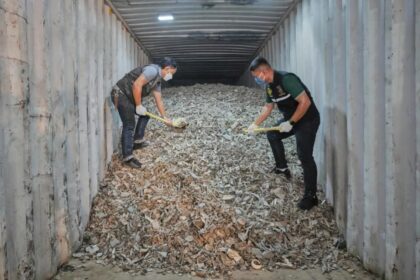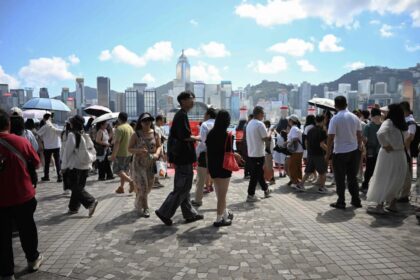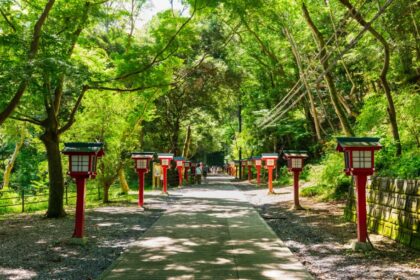Why Did Taipei Come to a Standstill?
On a recent Thursday, the bustling streets of Taipei fell eerily silent. Air raid sirens blared across the city, traffic halted, and residents in designated areas hurried indoors. This was not a scene from a disaster movie, but the reality of Taiwan’s largest-ever civil defence exercise—a dramatic rehearsal for a scenario that, while unlikely in the eyes of many Taiwanese, is taken very seriously by the island’s government: a potential invasion by China.
- Why Did Taipei Come to a Standstill?
- What Prompted Such a Large-Scale Drill?
- Inside the Drill: What Actually Happened?
- Learning from Ukraine: New Strategies for a New Era
- How Are Civilians Preparing?
- Public Sentiment: Scepticism and Resolve
- China’s Reaction: Dismissal and Pressure
- International Implications: A Regional Flashpoint
- Broader Lessons: Deterrence, Resilience, and the Will to Resist
- In Summary
The drill, part of the annual Han Kuang military exercises, was designed to test the readiness of both the government and the public in the face of a possible attack. It included mass evacuation drills, mock mass casualty events, and the temporary shutdown of businesses and roadways. The scale and visibility of the exercise underscored the growing sense of urgency in Taiwan’s defence planning as tensions with China continue to escalate.
What Prompted Such a Large-Scale Drill?
China has long claimed Taiwan as part of its territory and has not ruled out the use of force to achieve unification. In recent years, Beijing has ramped up military pressure, conducting frequent air and naval patrols near the island and staging large-scale exercises that simulate blockades and amphibious assaults. The election of President William Lai, whom China labels a separatist, has further heightened tensions.
Against this backdrop, Taiwan’s government has sought to demonstrate both its preparedness and its resolve. The Han Kuang exercises, which have run annually for decades, have grown in scale and complexity. This year, authorities combined the military drills with a sweeping Urban Resilience civil defence exercise, running from Tuesday to Friday across the island. The goal: to ensure that both soldiers and civilians are ready for any contingency.
President Lai, attending the event alongside government officials and foreign dignitaries, emphasized the importance of unity and resilience. He stated,
“We hope by preparing for war, we can avoid war, to achieve the goal of peace. With preparation, we have strength.”
His message was clear: deterrence through readiness, not provocation.
Inside the Drill: What Actually Happened?
Each day of the Urban Resilience exercise saw air raid sirens ring out for half an hour in several cities. During this time, residents in designated zones were required to shelter indoors or risk fines. All shops and restaurants paused operations, and road traffic came to a stop, with drivers instructed to pull over and seek cover.
In Taipei, hundreds of emergency workers and volunteers participated in air raid drills and evacuations at busy temple squares, schools, subway stations, and highways. A mock mass casualty event simulated missile or bomb strikes on buildings, with emergency personnel rescuing survivors, treating injuries, and distributing emergency supplies. These scenarios were designed to test not only the readiness of first responders but also the public’s awareness and ability to follow instructions during a crisis.
Military drills ran in parallel. Troops practiced defending key infrastructure, repelling amphibious assaults, and conducting urban warfare exercises in exhibition centers and on the subway. At a riverside park in a Taipei suburb, soldiers rehearsed re-fueling and re-arming Black Hawk and Apache helicopters with US-supplied Hellfire and Stinger missiles. In Taichung city, the military simulated pushing back enemy troops, while a high school in Taoyuan was transformed into a battle tank repair station.
Learning from Ukraine: New Strategies for a New Era
This year’s Han Kuang exercises were notably shaped by lessons from Ukraine’s resistance to Russia’s invasion. Taiwanese military leaders have openly acknowledged the need to adapt to modern warfare, which increasingly includes cyberattacks, disinformation campaigns, and so-called “grey zone” tactics—actions that fall short of open conflict but still undermine security.
Key lessons adopted from Ukraine include:
- Decentralized Command: The drills tested the military’s ability to operate even if central communications are disrupted, mimicking how Ukraine maintained coordination under Russian cyberattacks and missile barrages.
- Civil Preparedness: Taiwan has enhanced air-raid shelters, issued new civil defence guidance, and run public air defence exercises, aiming to protect civilians from large-scale attacks.
- Countering Hybrid Warfare: The exercises included scenarios to counter Chinese Coast Guard and maritime militia harassment, reflecting the ambiguous aggression seen in Ukraine.
- Public Messaging and Disinformation: Authorities warned citizens about potential disruptions and urged vigilance against misinformation, a challenge Ukraine continues to face.
New weaponry, such as US-supplied Abrams tanks and HIMARS rocket systems—both used effectively by Ukraine—were deployed during the drills. The exercises also featured live simulations of a full-scale invasion, round-the-clock operations, anti-landing exercises, and the mobilization of 22,000 reservists, the largest number to date.
How Are Civilians Preparing?
While the government’s efforts are highly visible, a quieter movement is also underway among ordinary Taiwanese. Civil defence groups like Kuma Academy and the Hemlock Civil Defence group have sprung up across the island, offering training in first aid, disaster response, and even countering online disinformation. These grassroots initiatives reflect a growing awareness that, in the event of conflict, civilian resilience could be as important as military strength.
Some participants, motivated by events in Hong Kong and the war in Ukraine, have begun stockpiling supplies and regularly train in first aid and physical fitness. Others, like American filmmaker Bryan Hopkins, emphasize the importance of community resilience, drawing lessons from Ukraine’s experience. However, not all Taiwanese support these initiatives; some worry that such activities could provoke China or are skeptical about their effectiveness.
The issue is highly politicized, with debates between political parties over the best approach to national defence. Despite government efforts to improve civil defence—including releasing a handbook and increasing military spending—many believe more needs to be done. Individuals like Jack Yao and Tobie Openshaw have taken personal steps to prepare, setting up supply depots and emergency plans. While some are ready to leave if conflict erupts, others are determined to stay and help, convinced that the Taiwanese people will resist any invasion.
Public Sentiment: Scepticism and Resolve
Despite the scale of the drills and the government’s warnings, most Taiwanese remain sceptical that an actual invasion is imminent. A government-backed poll conducted last October by the Institute for National Defence and Security Research found that over 60% of Taiwanese do not believe China will invade within the next five years. As one Taipei resident told the BBC,
“The chances of China invading are low. If they really wanted to invade us, they would have done it long ago. But I do believe we need these drills, every country needs it and you need to practise your defence… I believe there is still a threat from China.”
Others are more pessimistic about Taiwan’s ability to resist a full-scale assault, citing the vast disparity in military strength between China and Taiwan. Only about half of the population expresses confidence in the armed forces’ ability to defend the island, according to the same poll. This ambivalence has spurred the government to beef up its military, expand the Han Kuang exercises, and extend mandatory military service from four months to one year.
China’s Reaction: Dismissal and Pressure
China has dismissed the drills as a “bluff” and accused President Lai and his ruling Democratic Progressive Party of pushing a pro-independence agenda. Chinese officials have reiterated their opposition to US-Taiwan military ties and have responded to the exercises with their own shows of force, including increased air and naval patrols and targeted economic measures against Taiwanese companies.
Beijing’s Taiwan Affairs Office did not immediately respond to requests for comment, but state media have characterized the drills as futile in the face of China’s overwhelming military superiority. Nevertheless, Taiwanese officials insist that the exercises are necessary to demonstrate their determination to defend the island and to deter potential aggression.
International Implications: A Regional Flashpoint
The Taiwan Strait remains one of the world’s most dangerous flashpoints. Any conflict here could quickly draw in the United States, Japan, and other regional powers, with potentially catastrophic consequences for global security and the world economy. Taiwan’s role as a leading producer of semiconductors—vital components in everything from smartphones to fighter jets—adds another layer of strategic importance.
International observers, including military attachés and analysts, are closely watching Taiwan’s drills to gauge improvements in resilience and to assess China’s response. The United States, while not formally recognizing Taiwan as a sovereign state, maintains close unofficial ties and supplies much of the weaponry used in the Han Kuang exercises. Other countries, such as Canada, have signaled support by sailing naval vessels through the Taiwan Strait, which Beijing claims as its own but which many see as international waters.
Broader Lessons: Deterrence, Resilience, and the Will to Resist
Taiwan’s approach to defence is increasingly shaped by the recognition that modern warfare is not just about tanks and missiles, but also about information, morale, and the ability of society to function under stress. The integration of civil defence with military drills reflects a holistic strategy: in the event of conflict, the entire society—not just the armed forces—will be called upon to resist.
By making the drills more rigorous and public, Taiwan aims to send a clear message to Beijing: any attempt at invasion would be met with determined resistance, and the outcome would be far from predictable. As Ukraine has demonstrated, the will to fight and the ability to adapt can confound even the most powerful adversaries.
In Summary
- Taipei held its largest-ever civil defence drill, simulating a Chinese invasion with air raid sirens, evacuations, and mass casualty rehearsals.
- The exercise was integrated with the annual Han Kuang military drills, reflecting growing concerns over China’s military pressure and threats.
- Lessons from Ukraine’s resistance to Russia have shaped Taiwan’s approach, emphasizing decentralized command, civil preparedness, and countering hybrid warfare.
- Grassroots civil defence groups are training civilians in first aid, disaster response, and resilience, though public opinion remains divided on the likelihood of invasion and the effectiveness of such measures.
- China has dismissed the drills as a bluff, while Taiwan insists they are necessary for deterrence and preparedness.
- The drills serve as both a practical test of readiness and a strategic signal to Beijing and the international community that Taiwan is determined to defend itself.


